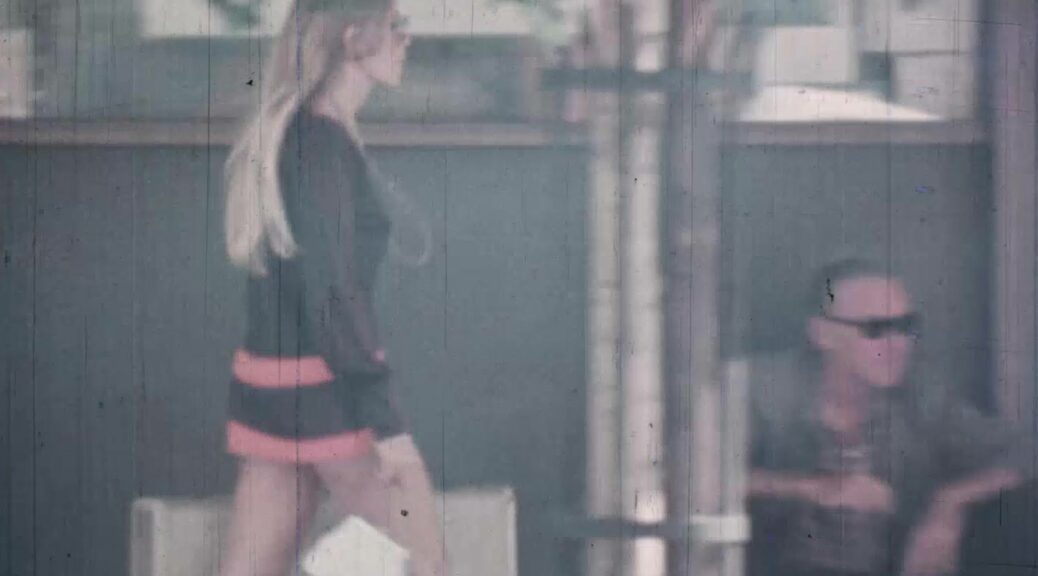An approach in seven questions.
~
It began in the summer of 1989. A&O abruptly ended its previous undercover activities and overran the public. Unforeseen productions proliferated in the Rezitativ-Salon in Kreuzberg’s Graefestraße, but also in other mysterious places in the city. Witnesses reported contradictory things so far.
~
It was already colorful, was a frequently interspersed comment. It was also loud. And fast, too. In the wake of this, a number of legends arose about the masterminds behind the hullabaloo. Finally, it was agreed that artists had been at work. Something else was not conceivable with such productivity boosts. Otherwise, A&O was borrowed from the Bible, a particularly credible interpretation, as long as the sacral function of A&O’s visual and audio works was fully taken into account.
Now the purpose of this enlightenment writing is not to force flourishing imagination into blinkered barriers. A&O thinks along gladly for others, but is careful to prevent other thoughts. Only it seems after scarcely one year more than appropriate to submit to the gallery without qualities such once in written form. Because not everyone has the leisure to meticulously follow all dates with A&O. And who comes later, is already punished enough and should not still embarrass with stupid questions.
1.What the hell does inconceptual perception systems mean?
Feasting on the sound of well-set foreign words in a row has won A&O many a friend. Nevertheless, we do not appreciate form without function. A&O are children of multidimensional perception. An ethnographer would argue that we have been told too many stories, served too many myths, too many parables and parables, too many logical explanations.
Our dilemma, however, is not buried under the quantities, under the too much, but under the artistic diversification of the stories, their complexity in meaning, their dependence on the moment and the point of view. Our myths – we cannot avoid speaking of simulation – make us dependent on the media’s explanation of the world. Ergo: Circulus vitiosus.
In short, we are nothing but conglomerates of perception.
And inconceptual perceptual systems simply means that we can only cope with the complexity of ego-imagers by trial and error. And only with the methods that have become irresistibly attractive gullets for us.
2. what does A&O do?
A&O exhibits and introduces. It would thus be a very ordinary gallery. However, it also differs from the usual ham hangers in the way it presents – A&O likes to be where people sweat and laugh, not where the concept of aesthetics is hectored over. About the things that hang at A&O, even the art historian is silent, laughs and is happy, if he dares. Artwork is artwork, and you should make friends with new things first hand.
3. what does A&O believe in ?
Well, in eyes and ears and in the fact that in the age of the sacred TV something has to be done to save you. A&O sometimes behaves in an extremely moral way – reckoning with the tricks of evil ultimately fires the imagination. And in times when morality is put into the hands of the electronic totalizer, it doesn’t matter anyway who sits on the throne of highest values. So that no one misunderstands us: no one is interested in how quickly we get sick. We leave that to the letter carriers and their flocks.
4. what does A&O doubt ?
About the saturation content of official sensuality bombardments. (Again, the screen is only a metaphor.) Because the busy feeding doesn’t take away our hunger, but it does take away our appetite. We sometimes fear that the diet mania of our fellow world not only leaves the body miserably starving, but also reaches for other centers of pleasure. If we are not careful, there is only one kick left, and it is called asceticism.
5. what does A&O work with ?
With the obvious, with what we are fed every day. With the pictures that are there. Because of us, not a single picture needs to be remade. There are already enough that are not seen. Enough that is hidden under layers of flicker and noise. And above all, enough that has not yet been drooled over and analyzed down. Digital magic, we’ll get you in the end!
6. how does A&O work ?
A&O grabs everything. Pornography, art, special effects, dramatic productions, images of women, the semiology of love and desire, the illustrations of functioning, the signs of reacting. Then come the media that taught us how to see. The Polaroid, the video camera, the slide. The photocopiers, the repro cameras. In between is light and shadow, physics and chemistry, and the sensational waiting for the moment of chance. The processes are called uncovering and covering, exposing, dissecting. Transforming, superimposing. Isolating and placing in new contexts. Reorganize.
7. who is A&O ?
Basically we are not anti – individualistic at all. And when something is shown, there is usually a name under it. It varies, just as the way we deal with the problem of reproduction varies. Since we not only work, but also look and listen, one cannot exclude that we also learn something.
By Cosima Reif & André Werner, around 1990
